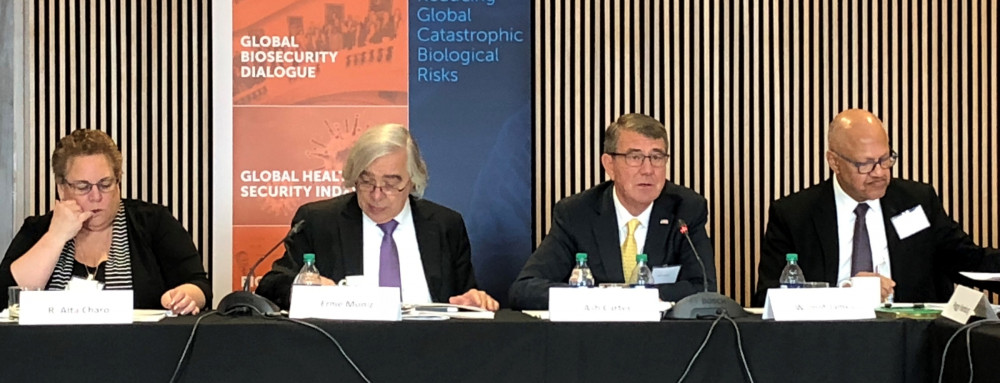
In an international effort to reduce global catastrophic risks associated with technological advancements, the Nuclear Threat Initiative (NTI) has established a multi-year project that will develop and promote actions that limit the potential misuse of biotechnology.
Launched last month, the NTI Biosecurity Innovation and Risk Reduction Initiative identifies paths to reduce biological risks, everything from preventing illicit gene synthesis to even exploring insurance incentives.
“It is imperative to recognize both the important benefits and the risks associated with advances in biotechnology,” said NTI Co-Chair and CEO Ernest J. Moniz. “This initiative engages the global technical community to develop concrete actions now that allow us to reduce the risk of accidental or deliberate misuse and create new opportunities for biosecurity innovation.”
The initiative has launched five working groups convening leaders from genomics, virology, microbiology, security, bioethics, research funding, and science publishing. The group is comprised of over 30 global experts and also includes advising organizations such as Wellcome Trust, the World Economic Forum and the Coalition for Epidemic Preparedness Innovations.
“We want to reduce risks associated with technologies while they are being developed,” Beth Cameron, vice president of Global Biological Policy and Programs at NTI told Homeland Preparedness News. “We want to spur innovation in biosecurity and decrease the potential for misuse or unintended consequences.”
One way of accomplishing this under the initiative, says Cameron, is to create a seal of approval to assess whether there is a culture of responsibility at an institution, determining if it prioritizes safety and security.
“Most people go into scientific fields because they are interested in bettering human kind,” Cameron said. “In practice, many life sciences technologies are dual use.”
Dual use is the principle that much of scientific discovery has the potential for both good and harm. This is coupled with the fact that recent advances in biotechnology are rapidly outpacing the ability of governments to provide effective oversight.
One striking example of this was the creation of horsepox, a cousin to smallpox, by a team of researchers at the University of Alberta. They were able to assemble and reproduce the virus in cells from pieces of DNA they received by mail. The online publication of their findings released earlier this year received backlash because it widely demonstrated that creation of the virus from scratch was possible.
“It didn’t surprise many in the research community that it could be done,” Cameron said. “What surprised many people was that it was done.”
She added it was particularly striking that the research team was Canadian, residing in a country that has strong dual-use policies.
Despite government inability to always keep up with innovation, the private sector has created some safeguards regarding dual use. This is most notable with the application of a voluntary mechanism that prevents illicit gene synthesis, where large companies screen DNA for dangerous pathogens.
However, even private enterprise struggles with rapid technological changes. The advancement of “desk top” DNA synthesis could allow more organizations in the future with small-scale but high-powered technology to create or modify agents without abiding by the screening process used by major corporations. NTI is advocating for a more universal platform that could provide a streamlined mechanism for companies that sell DNA to prevent against nefarious use.
Thinking outside the confines of the scientific community, NTI officials are interested in views from the insurance industry on assessing risk, just as they might hurricanes or floods, to mitigate biological threats. NTI is also seeking opportunities to incentivize investors to provide a portion of their funding for biotechnology toward safety and security as technologies are developed and implemented. Ultimately, the goal is to use economic incentives to encourage security.
“We think it’s untapped, uncharted territory,” Cameron said. “It will bring fresh perspective to the conversation on biological risk.”




